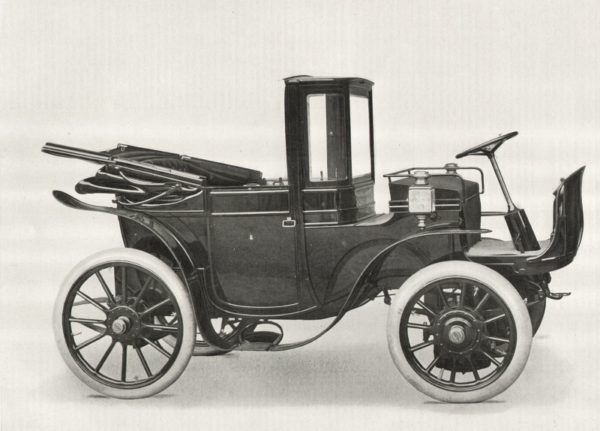
We were initially attracted to this Snapshot simply because of the sheer beauty and quality of the image, which comes from the November 1906 issue of Les Sports Modernes. However, further investigation into the vehicles designed and manufactured by Louis Antoine Kriéger reveals some interesting technical facts – and even a distance record!
Kriéger was an electrical engineer who formed his company as early as 1897. Initially he manufactured electrically-powered conversion units for horse-drawn carriages – essentially replacing the conventional front axle, its shafts and of course the horse with a two-wheeled unit with batteries and one electric motor per wheel.
From 1898, Kriéger made complete electric vehicles, still retaining the front-wheel-drive, using a Postel-Vinay motor in each wheel. The motors drove a small pinion that engaged in a large fixed gear on each hub. Postel-Vinay, incidentally, provided the motors for ‘La Jamais Contente’, the record-breaking electric car driven by Camille Jenatzy in 1899 to a land speed record of 105.882 km/hr. This pairing of Belgian car and Belgian driver thus became the first in the world to exceed 100 km/hr.
With the relatively crude battery technology of the time, much of the weight of these cars lay in the batteries, and it is not surprising that most Kriéger vehciles were town cars, coupés or landaulets, suitable for short journeys – a typical charge taking the car no more than 45 miles.
Nevertheless, in 1901 a Kriéger was recorded as achieving a journey of 192 km on one charge – supposedly a record that stood until 1942.
Apart from the technical interest of front-wheel drive, the Kriéger system enabled the motors to recharge the batteries when coasting – a power-recovery method used ever since to increase the range of electric vehicles.
Kriéger cars were well-known in France, and widely used as taxis and as private cars. The company survived until 1908, with some of the later cars being petrol-electric hybrids.







Leave a Comment